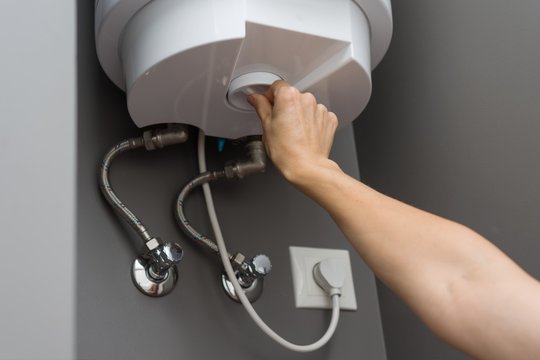Caring for Your Home's Hot Water System: Key Tips
Caring for Your Home's Hot Water System: Key Tips
Blog Article
What are your ideas on Tips on Maintaining a Water Heater?

Warm water is necessary for everyday comfort, whether it's for a revitalizing shower or cleaning dishes. To ensure your warm water system runs effectively and lasts much longer, regular maintenance is essential. This post supplies useful suggestions and understandings on exactly how to preserve your home's hot water system to avoid disturbances and expensive fixings.
Introduction
Keeping your home's warm water system might appear overwhelming, yet with a couple of easy actions, you can guarantee it runs smoothly for many years to come. This overview covers whatever from comprehending your hot water system to DIY maintenance tips and recognizing when to call in specialist help.
Relevance of Maintaining Your Hot Water System
Routine upkeep not only prolongs the life-span of your hot water system however also ensures it runs efficiently. Overlooking upkeep can bring about lowered performance, higher power costs, and also early failure of the system.
Indications Your Hot Water System Requirements Upkeep
Recognizing when your hot water system requires interest can protect against significant issues. Keep an eye out for indications such as inconsistent water temperature level, strange noises from the heating system, or rusty water.
Flushing the Hot Water Heater
Purging your hot water heater gets rid of sediment build-up, enhancing effectiveness and lengthening its life.
Monitoring and Replacing Anode Rods
Anode rods protect against deterioration inside the storage tank. Inspecting and replacing them when broken is essential.
Complicated Problems Requiring Expert Aid
Instances consist of major leakages, electrical issues, or if your hot water heater is constantly underperforming.
Regular Specialist Upkeep Conveniences
Specialist upkeep can include comprehensive inspections, tune-ups, and making sure compliance with safety standards.
Inspecting and Changing Temperature Level Settings
Readjusting the temperature settings makes certain optimal efficiency and safety and security.
Do It Yourself Tips for Maintenance
You can perform a number of maintenance tasks yourself to keep your warm water system in top problem.
Looking for Leaks
On a regular basis check pipelines and connections for leakages, as these can result in water damages and higher bills.
Understanding Your Warm Water System
Prior to diving right into upkeep jobs, it's useful to comprehend the standard elements of your hot water system. Normally, this includes the hot water heater itself, pipes, anode rods, and temperature controls.
Regular Monthly Upkeep Tasks
Routine month-to-month checks can assist catch minor concerns prior to they rise.
Testing Pressure Alleviation Valves
Checking the stress relief valve guarantees it operates appropriately and stops excessive pressure accumulation.
Insulating Pipelines
Protecting warm water pipelines decreases warm loss and can conserve energy.
When to Call a Professional
While do it yourself maintenance is helpful, some concerns require expert competence.
Verdict
Normal maintenance of your home's hot water system is vital for performance, long life, and cost savings. By complying with these pointers and recognizing when to look for professional assistance, you can ensure a dependable supply of warm water without unforeseen disruptions.
How to Maintain an Instant Hot Water Heater
Before tinkering with your hot water heater, make sure that it’s not powered on. You also have to turn off the main circuit breaker and shut off the main gas line to prevent accidents. Also turn off the water valves connected to your unit to prevent water from flowing into and out of the appliance. 2. When you’re done, you have to detach the purge valves’ caps. These look like the letter “T†and are situated on either side of the water valves. Doing so will release any pressure that has accumulated inside the valves while at the same time avoid hot water from shooting out and burning your skin. 3. When the purge valves’ caps are removed, you have to connect your hosing lines to the valves. Your unit should have come with three hoses but if it didn’t, you can purchase these things from any hardware or home repair shops. You can also get them from retail stores that sell water heating systems. Read the user’s manual and follow it to complete this task properly. When the hosing lines are connected, open the purge port’s valves. 4. You should never use harsh chemical cleaners or solutions when cleaning your unit. Make use of white vinegar instead. It should be undiluted and you’ll probably use about 2 gallons. 5. Now flush your water heater. This task should probably take about 40 minutes. We can’t give you specific directions for this because the procedure is carried out depending on the type, model and brand of your heater. With that being said, refer to the user’s manual. 6. When you’re done draining the unit, you have to turn off the purge port valves again. Remove the hosing lines that you earlier installed on each of the water valves. Put the valve caps (purge port) back in their respective places and be very careful so as not to damage the rubber discs that are found inside these caps. 7. Now that everything’s back in place, check your user’s manual again to find out how to reactivate your water heating system. 8. Once it is working, turn one of your hot water faucets on just to let air pass through the heater’s water supply pipes. Leave the tap on until water flows smoothly out of it. https://www.orrplumbing.com/blog/2014/september/how-to-maintain-an-instant-hot-water-heater/

We are very curious about What Kind of Maintenance Do Water Heaters Need? and I am assuming you enjoyed reading the new blog post. Sharing is nice. You just don't know, you may just be doing someone a favor. Thanks so much for going through it.
Give Me A Quote! Report this page